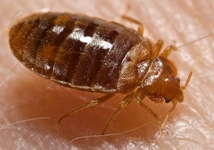Can you supply sample bedbugs to help the University of Sheffields bedbug DNA project? Researcher Toby Fountain and his Professor Roger Butlin hope you can.
Toby explains: “Here at the University of Sheffield we are studying the DNA of bedbugs so that we can identify whether an infestation has developed from a single source or from several introductions.”
|
“This will have a number of practical uses. For example, where there are a series of infested rooms it will allow us to determine whether all infested rooms have resulted from one event or whether there have been several bedbug introductions. Importantly, where properties have been re-infested, we will be able to say whether the bedbug is a new arrival or one that escaped the previous control attempt.” So how many bedbugs do the researchers need and how do you collect them? “Ideally we need between 10 and 20 bedbugs per room/cabin/house and, if several rooms/cabins/adjacent houses are infested, the bedbugs should be kept separate,” says Toby. |
|
|
“We can look at them either dead or alive. To collect them live, just drop the bugs in a zip lock plastic bag, put a small piece of paper in with them and THEN SEAL IT.
“To kill them, put them in a pot and pour a little bit of medical alcohol over them. If you don”t have any medical alcohol which should be available from a pharmacist, we can provide pots with ethanol,” he adds.
Whether the samples are dead or alive the researchers would like you to record the date (or at least the month) of collection. If samples have been collected from more than one room/cabin/house then an estimate of the distance between the rooms/cabins/houses will also be very useful. If you give each sample a description or number this will make explainingg the distances easier.
Send your samples to:
Toby Fountain
Evolutionary and Ecological Entomology
Dept of Animal and Plant Sciences
University of Sheffield
Sheffield
S10 2TN
If you have any questions about the sampling please email Toby Fountain or Prof. Roger Butlin.


